When users adopt your product seamlessly and integrate it into their routine soon after purchase, you can count on stable revenue and long-term retention of happy, successful customers.
In this article, you’ll find seven practical and actionable tips that will allow you to improve user software adoption and unlock all of these benefits and much more.
And it all starts with attracting the right customers in the early days.
Know Who Your Early Adopters Are
Early adopters are the first large group of users to adopt your software product and integrate it into their routine.
Once you get them onboard, you should be perfectly positioned to start entering the mainstream market.
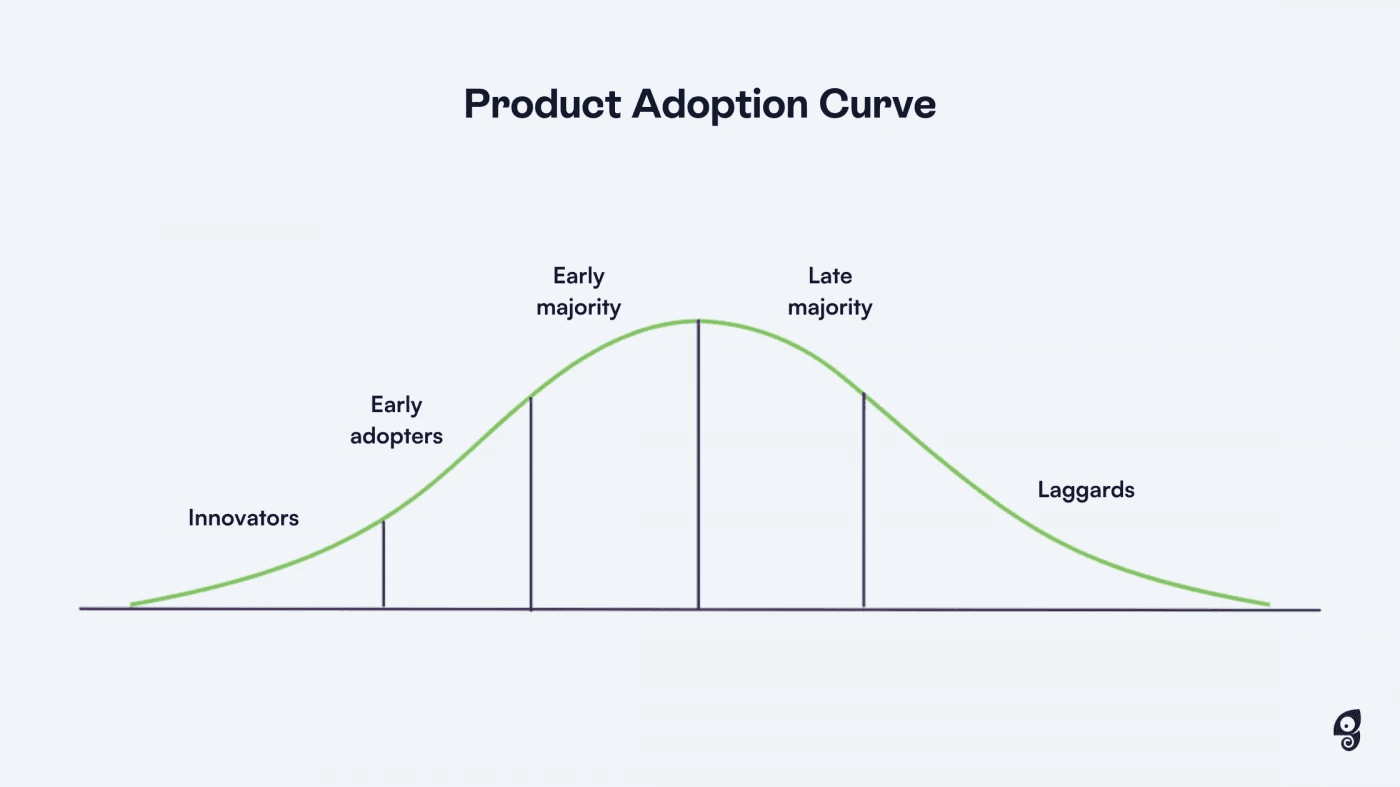
Source: Chameleon
But how do you get your product in front of these tech-savvy enthusiasts? Social media might hold the answer.
Tech founders and developers often turn to their social media audiences to find people interested in the product they’re currently building.
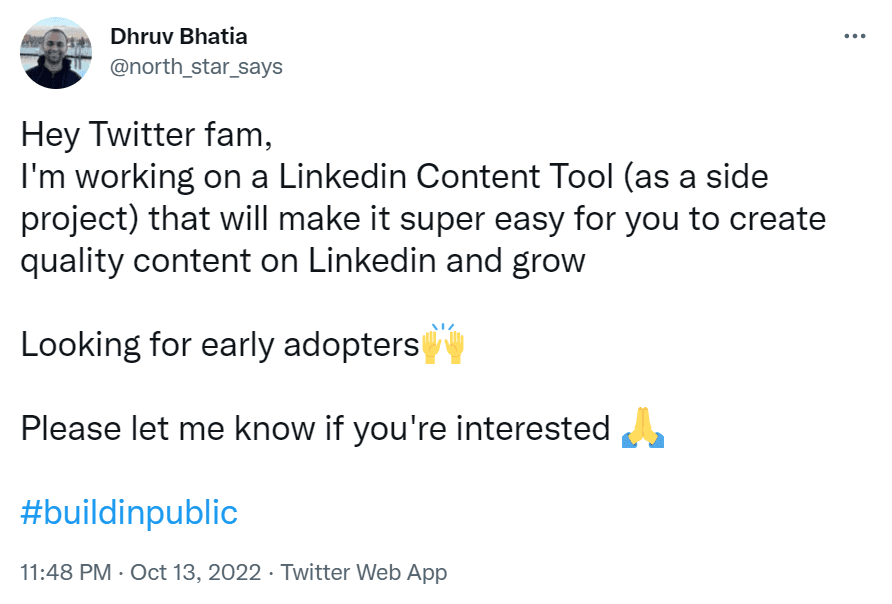
Source: Dhruv Bhatia
If you have a strong following and appeal to the right audience, you might be surprised at the response you get this way.
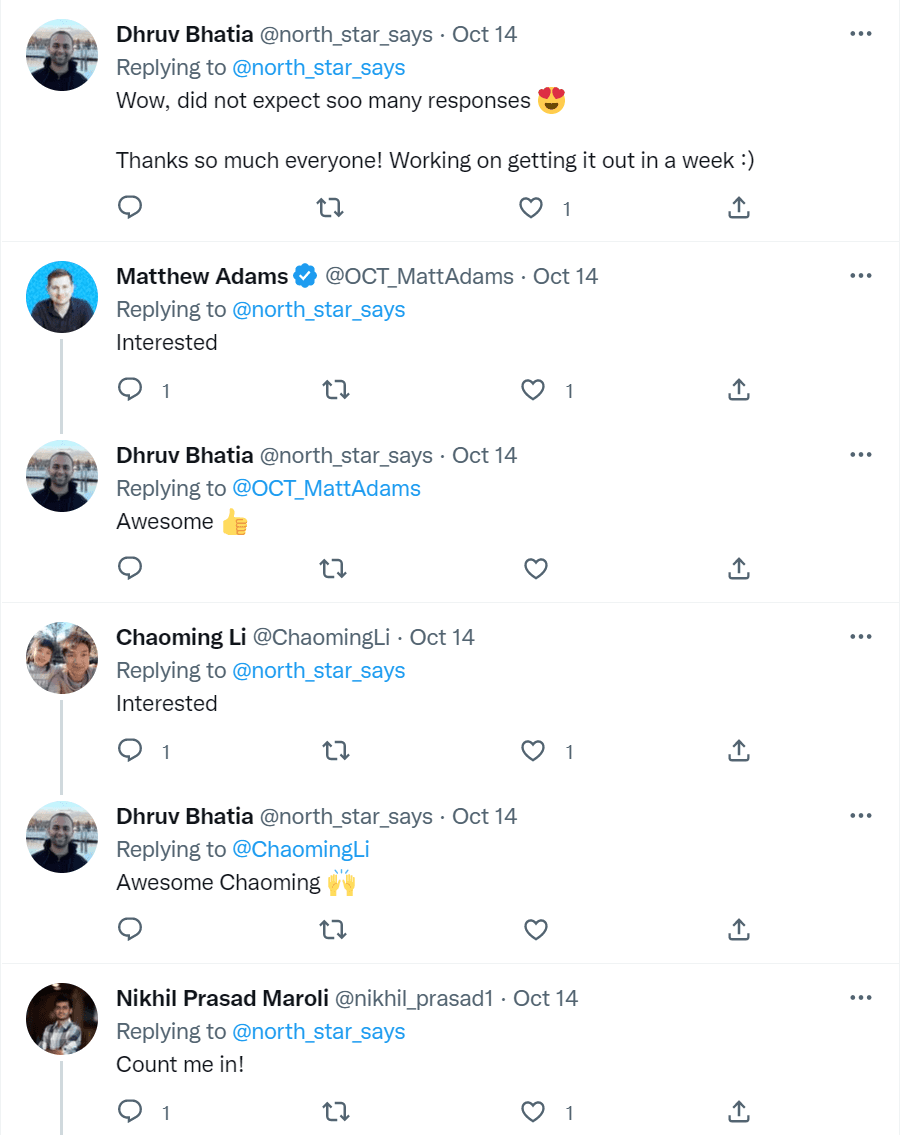
Source: Dhruv Bhatia
Once you gather some interested potential users, you can give them early access to your product, monitor how they use it, and see whether it meets their needs adequately.
But you should also take the time to get to know these users and find out what they have in common so you can fine-tune your messaging to attract even more users to your product.
So, set up some live or virtual meetings and do some customer discovery interviewing.
Try to extract information such as:
- How severely are users experiencing the problem you’re solving with your product, and how much would they be willing to pay for it?
- Have they tried other products for this purpose, and if so, what were those products lacking?
- What would the ideal product in this space look like for them? Which features would it include?
- Which resources do they use to discover new products and which channels are they most likely to be found in?
Once you have a good idea of who your early adopters are, you can confidently start building a marketing plan to appeal to your audience, as well as adapt the development of your product so that it’s easier to adopt for your target users.
Create a User Journey Map
User journey maps tell the story of your user’s entire experience with your product.
They’re usually formatted as a visual flowchart that depicts how an ideal customer would gradually adopt the product after initially hearing about it.
Therefore, the basis of your journey map should correspond to the stages of product adoption, at least partially.
Like in this example:
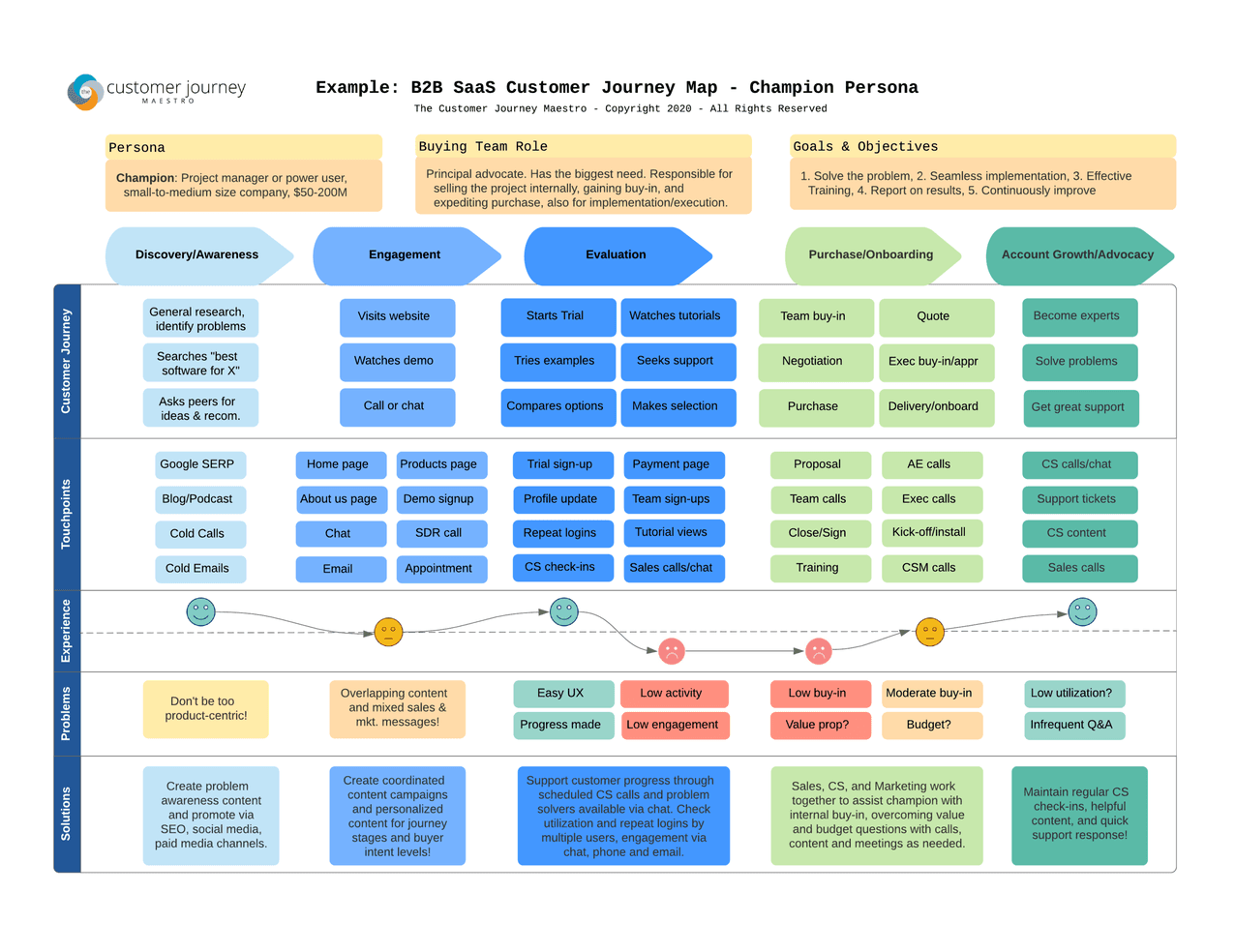
Source: Segment
Once you’ve segmented the user journey into phases, you can identify the key touchpoints, problems, and solutions in each phase to systemize the adoption process and make it predictable for most of your users.
For example, if your users should be interacting with a trial version of your product (touchpoint) in the evaluation phase, but you’ve identified a problem in the level of activity of the user, you can apply a solution to increase engagement, such as a targeted email campaign with tips and tricks to motivate the user to keep interacting with the software.
Airtable does this pretty well. This is their motivational email for motivating users to interact with the platform:
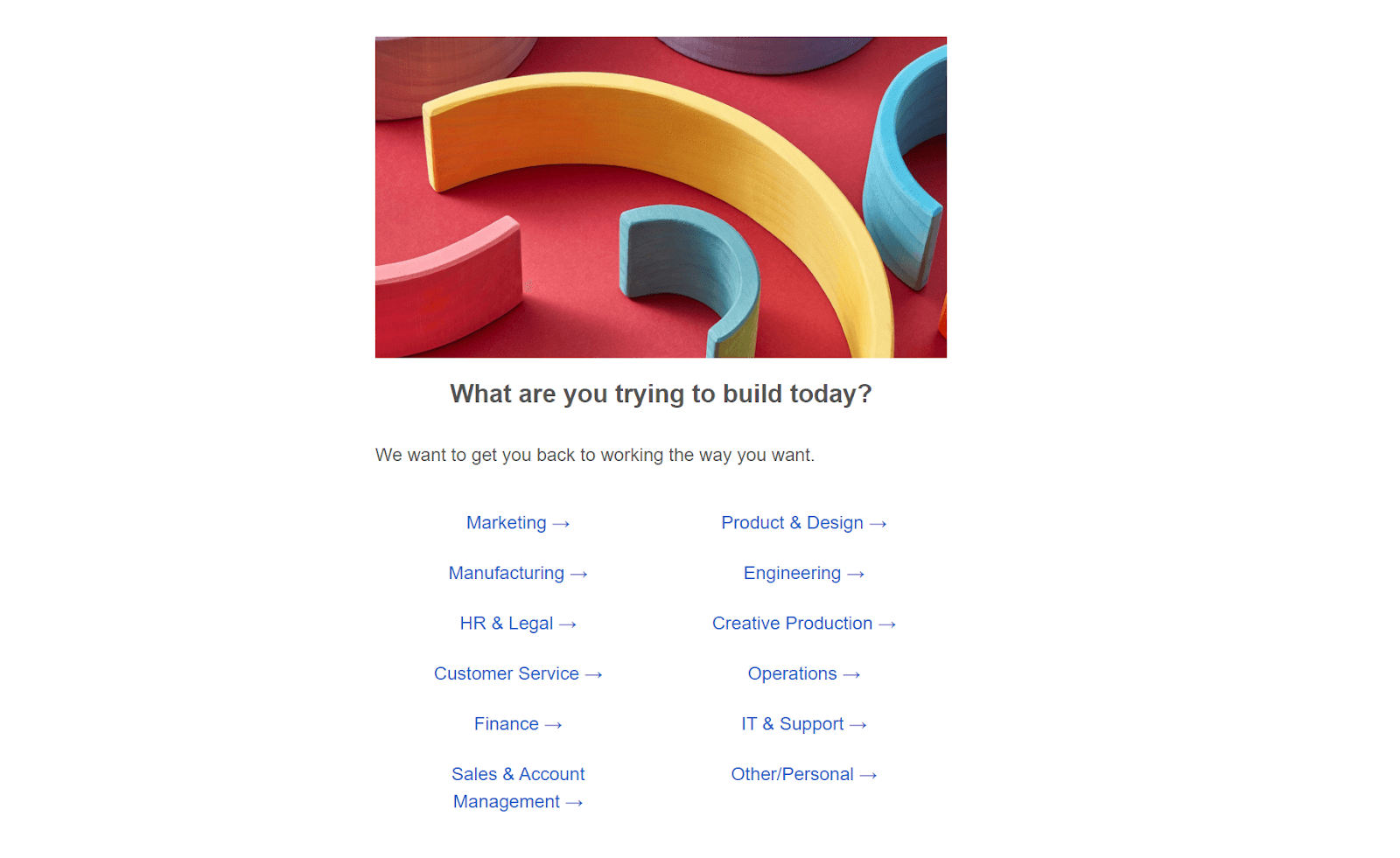
Source: Airtable
If you express your adoption process as a user journey map, it will be much easier to spot when customers start behaving in a way that isn’t conducive to good adoption figures.
That allows you to act and get the user back on track before they do something dramatic, like churning from your service.
Guide Users to Reaching Their “Aha!” Moment
Your user’s Aha! moment is the point when they finally realize the value your product can bring into their life. Once that happens, complete product adoption is very likely to follow.
Therefore, the smart move on your part would be to try to induce the Aha! moment by guiding your user toward it.
The big challenge here comes from not knowing what your Aha! moment actually is. Luckily, there’s a method to change that.
By using product analytics software, such as Mixpanel, you can track how certain events correlate to product adoption.
Here’s an example.

Source: Mixpanel
In the above analysis, the event of playing a song is strongly correlated with conversion goals (which indicate the user has adopted the product).
Therefore, playing a song could be the Aha! moment for this product, and you should find ways to guide users to this action.
Guiding user actions can also be quite challenging, and it may take some creativity on the part of your team.
For example, LinkedIn has identified its Aha! moment as a certain number of connections in a certain number of days.
After that, as the company has noticed, users are much less likely to drop off because product adoption has been achieved.
Their method of guiding users toward the Aha! moment is using notifications that suggest possible connections to users and motivate them to network with other LinkedIn users.

Source: LinkedIn
Remember, guiding users to their Aha! moment is your way to accelerate and secure complete adoption.
So find out what that moment is for your product and develop ways for users to achieve it as quickly as possible.
Keep Track of Your Feature Adoption Rate
Logic dictates that the user who understands and regularly uses the greatest number of a product’s features is the user that has been most successful in adopting that product.
Let’s take a look at a practical example.
If you work for a company with at least several employees, you probably use a communication app such as Slack.

Source: Slack
Slack has a wealth of features.
Apart from the obvious (chat and video conferencing), it also offers desktop and mobile versions, organizing communication into channels, alerts and reminders, many integration options, and much more.
When a user regularly accesses many or all of these features, their work communication is made much easier and better organized.
They see Slack as an integral part of their workday and can’t imagine working without it.
That’s exactly what complete adoption is supposed to look like and what you should strive for with your product.
To keep track of feature usage and adoption, you’ll need to use product analytics tools that will provide you with data on which features are regularly used and which are falling short.
There are many options to choose from. Revenera is a good example, as this tool will give you insight into particular features and events, allowing you to track them in detail.
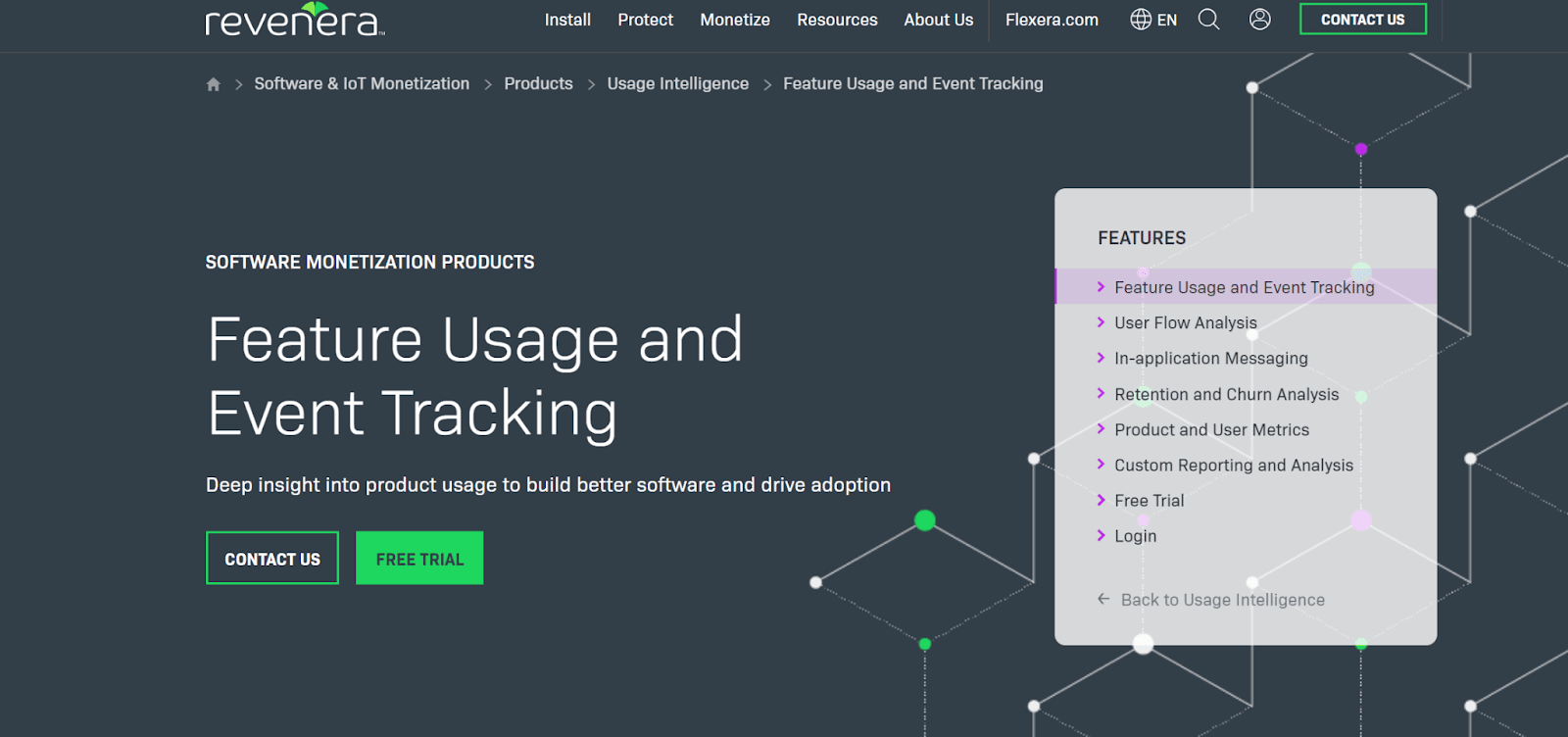
Source: Revenera
Once you identify features that are lagging, you can take action to promote their use and thus improve overall adoption.
For example, you can run an email campaign promoting a less-used feature and its benefits.
Here’s how ActiveCampaign does it. This email acknowledges that the tool’s key feature is email automation but also promotes other functionalities the user might not have used yet.
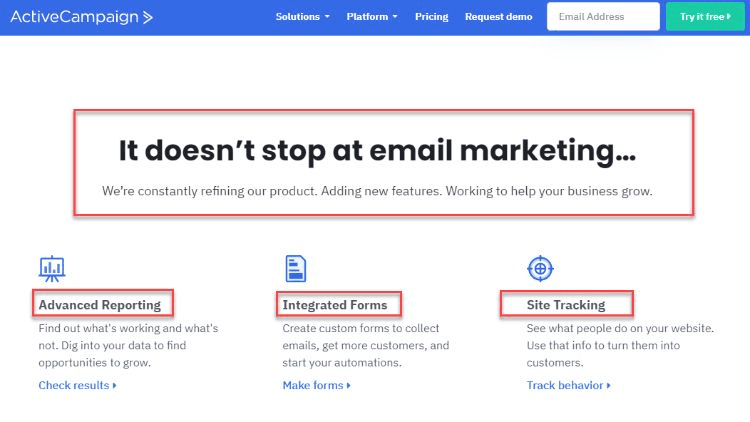
Source: ActiveCampaign
To sum up, if only one of your product’s features is regularly used, you’re unlikely to achieve stable adoption rates because your product will be unremarkable and utterly replaceable.
But with several intertwined features, all of them equally loved by users, you’re on the right track to high adoption figures.
Use Gamification to Engage Your Users
Product adoption happens with practice and focus.
And as human beings, one of the most effective ways to keep us dedicated to a task and focused on completing it is by making that task fun and engaging.
Just think of your favorite video game. Why do you keep coming back to it? Why do you keep getting better at it?
It’s because you perceive it as fun and gladly dedicate your time to the game.
This connection between fun, habit, and skill isn’t lost on SaaS experts.
In fact, gamification in software has been comprehensively studied and found to have an incredibly strong effect on user engagement.
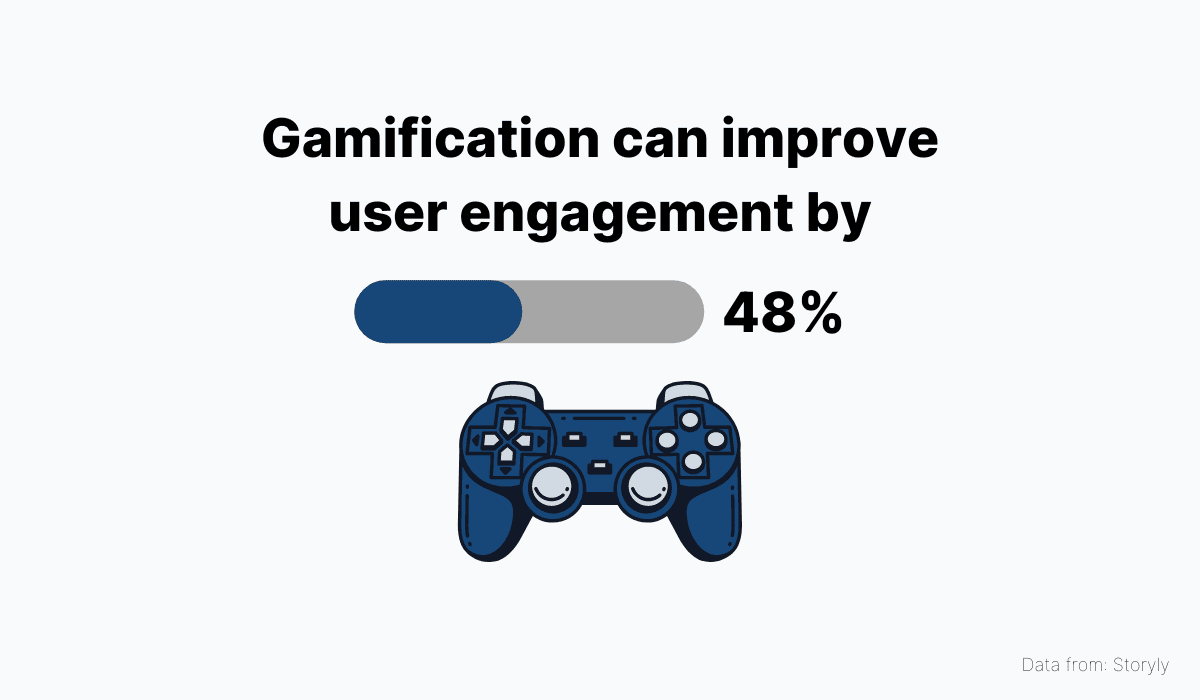
Source: Archbee
If you’re wondering how software tasks and actions can be turned into a game, all you have to do is look at some great examples from contemporary SaaS providers.
Duolingo is the front-runner here.
Duolingo’s effectiveness as a language learning resource depends on users logging in and practicing daily.
This is achieved using gamification elements that turn practice into a fun, competitive activity that does a great job of engaging users.
Take a look at some of Duolingo’s gamified elements below.

Source: Raw Studio
Duolingo is one in a sea of language learning apps, but it’s probably the most famous and accomplished one.
And that is, in part, thanks to their gamification strategy that keeps users regularly practicing, which fosters seamless and fast adoption and long-term retention.
Are there elements of your software that could be gamified in this way? If there are, it’s worth the effort to look into them because your adoption rates stand to improve quite substantially.
Send Your Users Targeted Emails
To reiterate our point from the previous section, keeping users active within your software is the best way to facilitate product adoption and retain users in the long term.
Another way of doing that is by utilizing email marketing to motivate regular use.
However, not all users will respond to the same type of email since not all users have the same relationship and level of skill with your product.
So before you start an email campaign with the goal of improving adoption, you should first segment your audience and think about what kind of email they would find useful for their experience with your software.
Here’s a suggestion for segmenting users according to their needs and level of skill:
- New users who need product onboarding
- Regular users who need to level up their product use
- Lapsed users who need a reason to come back
For example, new users who are still confused about your features and what can be achieved with the product will find great use in a short series of emails explaining product use.
Look at how Square, the financial payments app, onboards new users and motivates them to make their first steps with the product.
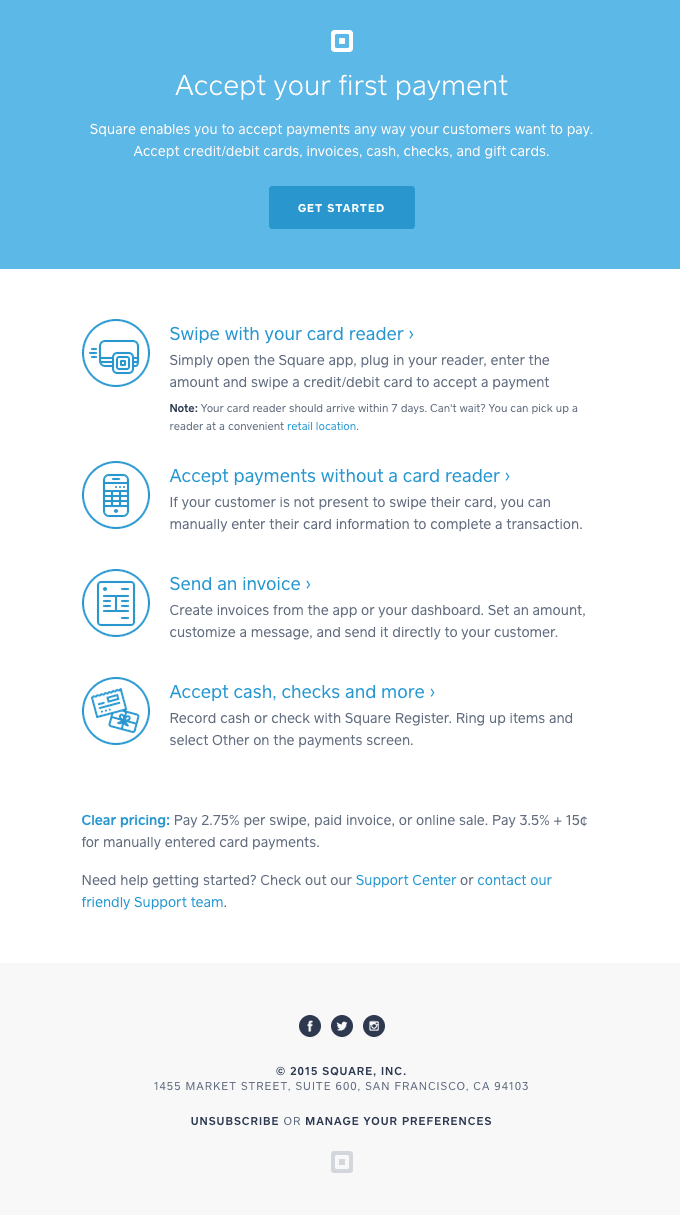
Source: Sendx
An important user goal (accepting the first payment) is clearly stated at the top, and so are the steps needed to achieve it below.
The user is directed to customer support if they have any issues with this task, and they can start right away by clicking the CTA button under the title.
Clearly, this email wouldn’t affect a power user of the product, but it can initiate product adoption for new users.
And that’s why it’s important to target the right audience segments with the right emails if you want better product adoption.
Offer Your Users Continuous Support
Our last tip might just be the most important one for optimal product adoption.
Users shouldn’t be expected to understand how a software product works intuitively and without any guidance.
That means you’re going to have to offer user support continuously for them to learn how to operate the software successfully and fix any problem they encounter along the way.
Now, user support comes in a couple of different formats. These include:
- Agent support (live chat, phone, email)
- AI support such as chatbots
- Self-service support such as product documentation
The support method that’s been getting a lot of traction lately is self-service support.
This channel is one of the most cost-effective support methods available today, and many customers actually prefer it to human agents.
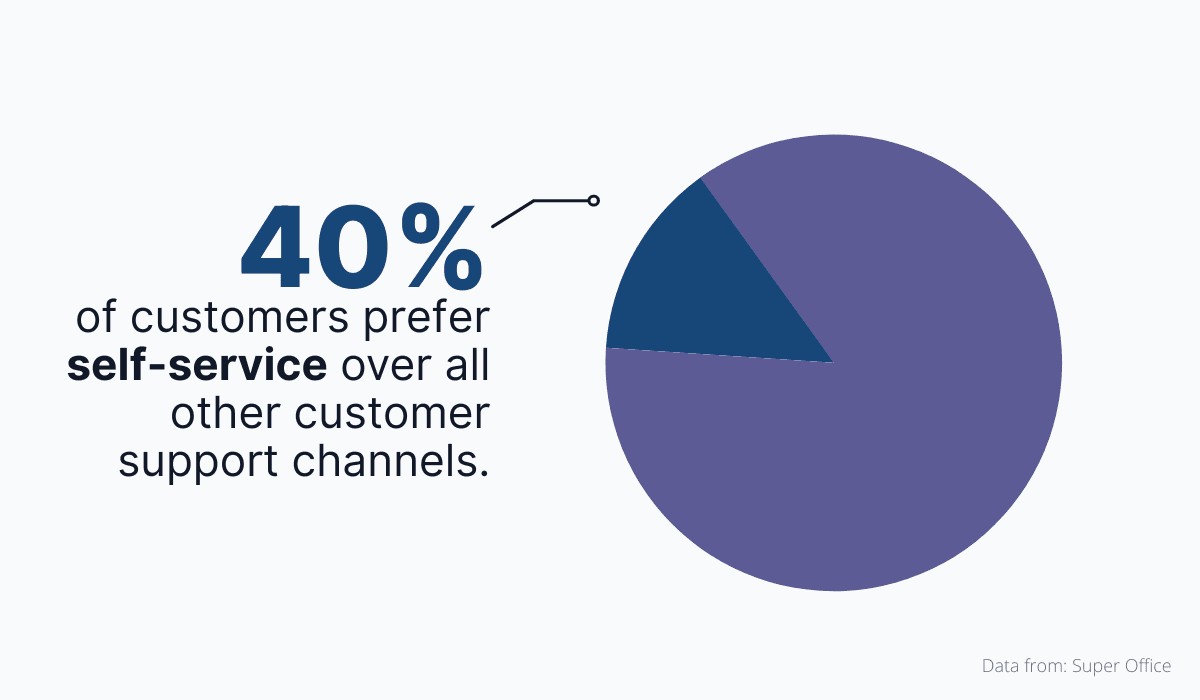
Source: Archbee
Therefore, it comes as no surprise that almost every SaaS product these days is accompanied by an online knowledge base where users can find instructions, tutorials, troubleshooting guides, and much more.

Source: Zendesk help
And with modern-day documentation software, such as Archbee, it’s never been easier to create, upload, and manage product documentation and knowledge articles.

Source: Archbee
To sum up, product adoption can’t happen without dedicated support for your users.
There are several options for customer support channels available to you, and the most cost-effective one that’s also preferred by almost half of technology users is self-service support, such as product knowledge bases.
Conclusion
To conclude our discussion on the ways you can improve user software adoption, we can say that several elements are very effective in fostering product adoption.
These include intimate knowledge of both your audience and your product, as well as practices that engage and support users as they’re trying to form a habit of using your product.
The tips we provided in this article make use of one or both of these elements, so try to apply them to the product adoption process for your product.
You should be seeing improved adoption rates soon after.
Frequently Asked Questions
Software adoption is the journey a user takes from first discovering your product to relying on it as part of their daily routine. It typically moves through stages: awareness, evaluation (e.g., a demo or trial), onboarding and activation (reaching the Aha! moment), habitual use, and expansion to more features. Strong adoption matters because it drives retention, reduces churn, and creates predictable, recurring revenue. You can tell adoption is improving when you see faster time-to-value, higher activation and feature adoption rates, healthy WAU/MAU, strong retention cohorts, and positive feedback (e.g., NPS).
